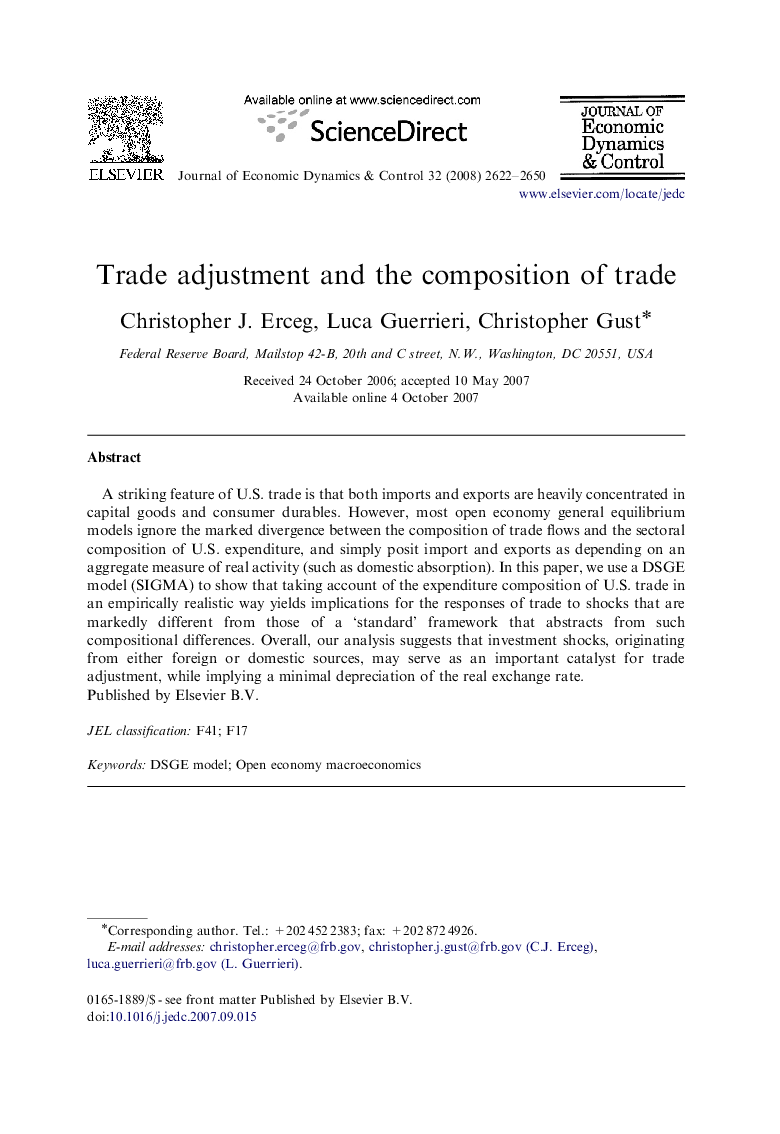| Article ID | Journal | Published Year | Pages | File Type |
|---|---|---|---|---|
| 5099251 | Journal of Economic Dynamics and Control | 2008 | 29 Pages |
Abstract
A striking feature of U.S. trade is that both imports and exports are heavily concentrated in capital goods and consumer durables. However, most open economy general equilibrium models ignore the marked divergence between the composition of trade flows and the sectoral composition of U.S. expenditure, and simply posit import and exports as depending on an aggregate measure of real activity (such as domestic absorption). In this paper, we use a DSGE model (SIGMA) to show that taking account of the expenditure composition of U.S. trade in an empirically realistic way yields implications for the responses of trade to shocks that are markedly different from those of a 'standard' framework that abstracts from such compositional differences. Overall, our analysis suggests that investment shocks, originating from either foreign or domestic sources, may serve as an important catalyst for trade adjustment, while implying a minimal depreciation of the real exchange rate.
Related Topics
Physical Sciences and Engineering
Mathematics
Control and Optimization
Authors
Christopher J. Erceg, Luca Guerrieri, Christopher Gust,
